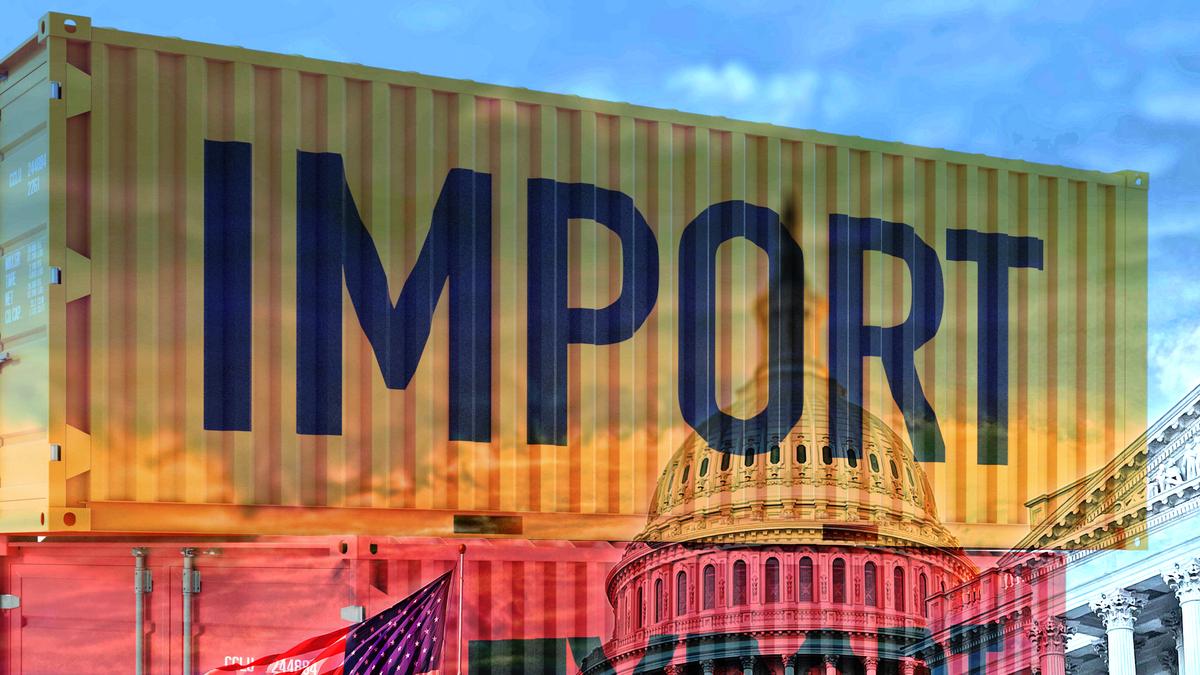The global economy is undergoing a significant transformation, marked by shifts in trade policies and continuing geopolitical tensions. We see a return of trade wars, the review of tariffs by countries as well as a surge in negotiations for bilateral trade agreements. These have led to heightened uncertainties, impacting not just trade but also financial markets and economic growth prospects.
With global trade dynamics evolving rapidly, it could lead to a structural realignment of global trade with long-term implications for trade and investments. Businesses will have to weigh the short-term challenges as well as long-term opportunities. Industry has to re-strategise amid rising costs, disrupted supply networks, and asymmetric information. The United States is India’s largest export destination accounting for nearly one-fifth of India’s merchandise exports. Therefore, uncertainties in the tariff regime in this market severely impact the business of Indian exporters. For certain sectors such as marine, apparel, carpets, gems and jewellery, pharmaceuticals, auto components, and electronics, India’s dependence on the U.S. market is very high. Additional tariffs would erode margins of these exporters, particularly Micro, Small and Medium Enterprises (MSME)s and make their exports unviable.
Possible issues
However, the imposition of the U.S.’s reciprocal tariffs itself remains uncertain given the possibility of interim deals and trade agreements that the U.S. is negotiating with many countries (including India) and also the recent order of the U.S. Court of International Trade challenging the imposition of reciprocal tariffs. Under such uncertain scenarios, one cannot even accurately assess whether Indian exporters will get any relative tariff advantage vis-à-vis competing countries such as China, Bangladesh or Vietnam that was considered a high probability in the initial assessment when reciprocal tariffs were announced. Experts and economists have highlighted that the direct impact of these tariffs (if implemented) on the Indian economy is expected to be limited due to India’s resilient external economy, particularly rising contribution of services exports, high remittances, adequate forex reserves and low current account deficit. However, the uncertainties surrounding the tariffs are detrimental for exporters planning new orders and also their impact on decision making. In addition, there is a risk of increased threat of dumping into India by China and the Association of Southeast Asian Nations looking to redirect their surplus production.
Medium- to long-term opportunity
Despite the global headwinds, India stands to benefit with the right strategy. The global restructuring of trade offers India an opportunity to become an integral part of the renewed global supply chains. India needs a three-pronged strategy — to manage external shocks; to ensure domestic economic resilience and to leverage a window of opportunity to enhance its global exports. These key policy actions can be considered. First, India has taken a proactive approach by engaging early in Bilateral Trade Agreement (BTA) negotiations with the U.S. Being the first to conclude such an agreement could give India a first-mover advantage. The BTA must be crafted to ensure zero tariffs on sectors critical to India’s interests, while cautiously opening up areas without compromising national priorities. India’s service exports to the U.S. remain robust and it must be ensured that these are not impacted. Liberalisation of tariffs with the U.S. should be approached on a strictly bilateral basis. Addressing non-tariff barriers (NTBs) will be critical. Possibilities of mutual recognition agreements must be explored. A swift yet balanced trade deal will be key.
Second, the conclusion of an FTA with the U.K. is a huge positive. India must now pursue other key FTAs with equal vigour. The early conclusion of an FTA with the European Union, Comprehensive Economic Cooperation Agreement with Australia and other important partners will offer Indian exporters enhanced market access in alternative markets.
Third, strengthening import monitoring mechanisms becomes important in wake of a greater risk of dumping into India. Trade remedial measures should be deployed swiftly to protect domestic industries from economic damage.
Fourth, sustaining public capital expenditure is vital in maintaining growth momentum amid global headwinds. Continued public capex will ensure that the domestic economy remains resilient and also help to crowd-in private investments over the medium term.
Fifth, monetary policy should continue to remain accommodative. With inflation currently under control and projected to be lower in coming quarters, further rate cuts by the Reserve Bank of India will help propel growth.
Sixth, anchor potential foreign investments across sectors looking to diversify their supply chains from China, Vietnam and other countries. A focused approach would be required to target global companies to set up shop in India.
Expedite reforms
Finally, work towards next generation reforms and regulatory reforms — as proposed in the last two Union Budgets — must be expedited. Production-Linked Incentive (PLI) schemes must be expanded to include other potential sectors (e.g., hearables and wearables, IoT devices, battery raw materials). These will help scale up manufacturing, attract investment in critical sectors, and build self-reliance.
While global uncertainties pose undeniable challenges, they also offer an opportunity for India to emerge as a global manufacturing hub and be an integral part of the global supply chains. Through strategic trade negotiations and structural reforms, India can weather the storm and emerge stronger.
Industry needs to re-strategise amidst rising costs, disrupted supply networks and asymmetric information
Harsha Vardhan Agarwal is President, The Federation of Indian Chambers of Commerce & Industry (FICCI)
Published – June 23, 2025 12:08 am IST
